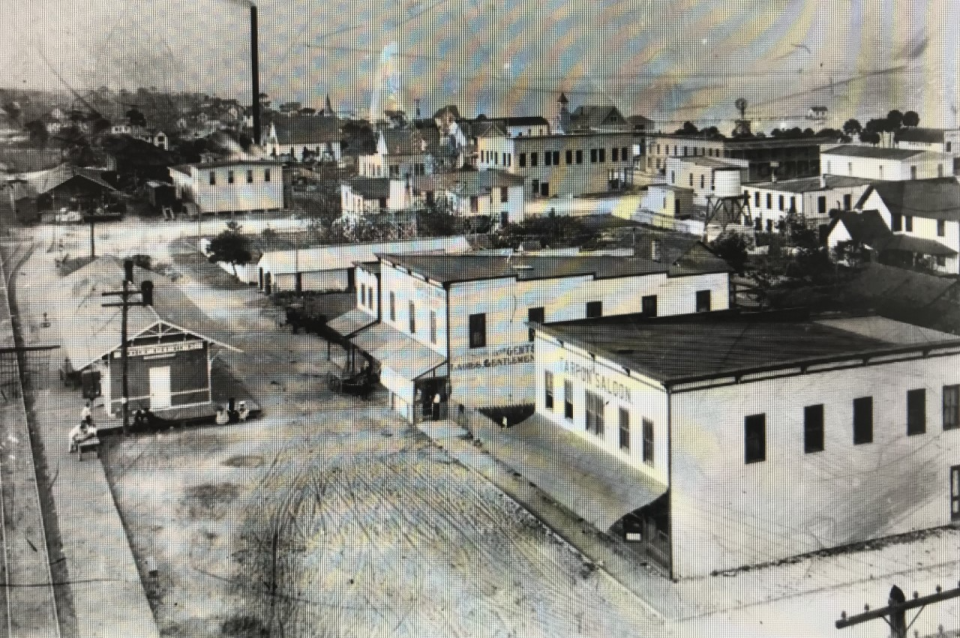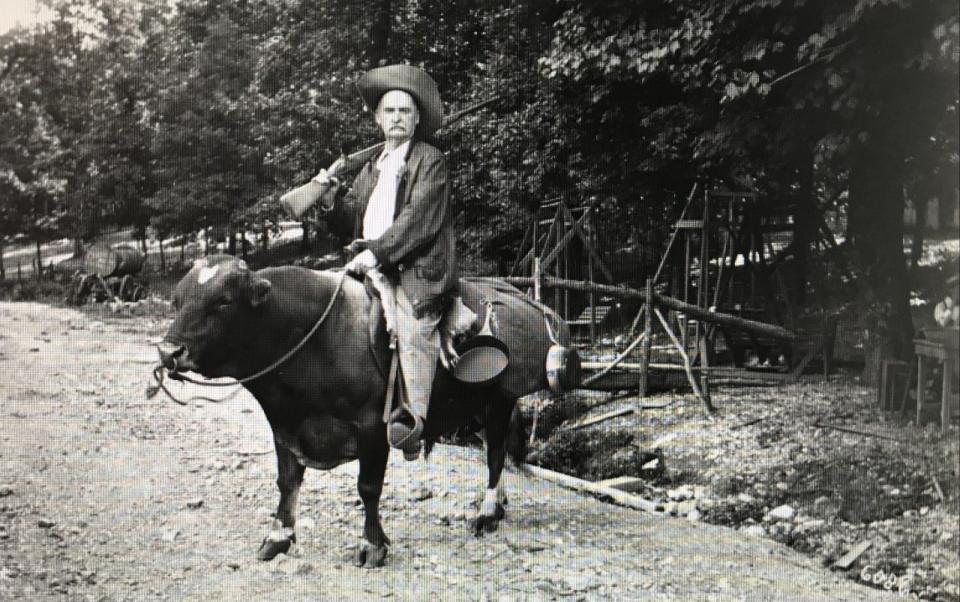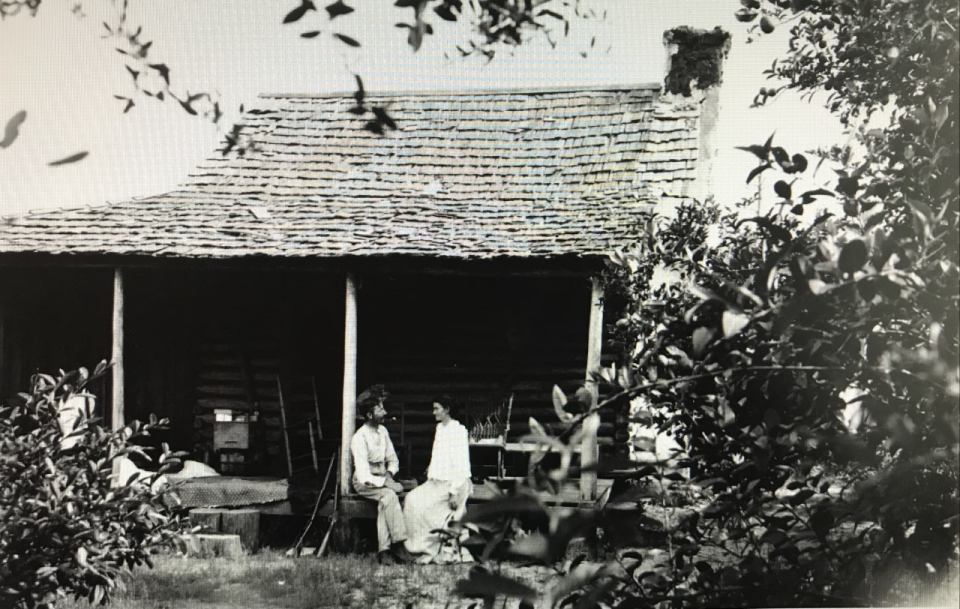Local history: Fort Pierce’s first saloonkeeper was William J. Tucker
FORT PIERCE — William J. Tucker was one of St. Lucie County’s unforgettable early residents — he was Fort Pierce’s first saloonkeeper.
Born in 1840, in the northern Florida hamlet of Newnansville and raised in Lake City, Tucker settled in Fort Pierce around 1890, when the area was still part of Brevard County. He had been here earlier, stationed at Fort Capron for the Third Seminole War during the late 1850s.
In the spring of 1893, Tucker distributed a petition asking to open the first saloon in Fort Pierce. A license was granted and he opened the Tarpon Saloon downtown. The establishment thrived.

Local history: Rumrunning trade roared along Florida’s Treasure Coast
Renaissance Man of the early Indian River era: Local history: C.P. Platts was early St. Lucie physician and civic leader
Florida freezes? They've happened before: Local history: Historic freezes caused havoc and changed Florida’s agriculture
By 1894, the Tuckers were building what was termed, “a fine, new house on his lot in Edgartown,” a neighborhood in northern Fort Pierce. He hosted a dance on St. Patrick’s Day and by July had built a pretty fence around the property.
A Titusville newspaper, “The Star,” reported on March 22, 1895, “W.J. Tucker, Fort Pierce, handles nothing but the best, especially in the soda water line. Call upon him and get a cool, refreshing drink. The soda water is manufactured by Indian River Bottling Works, Titusville, with pure distilled water.”
In February of 1898, Tucker moved his saloon to a new building constructed on a lot he owned near the depot for Henry Flagler’s new railroad that had reached Fort Pierce in late 1894.

Tucker kept an extensive menagerie behind his saloon. Accounts of that time say the creatures included, “...a monster crocodile, three wildcats, two otters, four polecats, four American eagles, three buzzards, two cub bears, a manatee calf, several deer, a collection of sandhill cranes, pelicans, possums, snakes — all manner of wild specimens provided by local hunters. A gang of boys roped and muzzled a large bear on Hutchinson Island and sold their fierce captive to the menagerie’s owner.”
Tucker promoted his collection as the, “Florida Menagerie from the Everglades.” In the early 1900s, he took his show to Palm Beach to give tourists something to do when they had grown weary of strolling the hotel environs under their parasols. One of his journalist friends gave him a plug, “We have seen Mr. Tucker’s Fort Pierce menagerie and we believe there is none other in the state superior to it.” He also took the menagerie to the state fair held in Jacksonville.
In 1900, Tucker applied for and received a license to open a bar in Cocoa. His son Goss was tasked with running it, although he perhaps wasn’t cut out for that line of work, as the license was not renewed after two years.
William Tucker was active in state Democratic Party events. He often traveled to Titusville or Jacksonville for political activities. If there was a state or county convention or parlay anywhere, Tucker was a delegate. After one such event, the following was reported in the Titusville Star:
“Last Thursday was a gala day in town, booming guns denoting the arrival of Mr. W.J. Tucker, our respected townsman and Democratic delegate to the county convention. A large number of his enthusiastic constituents met him and conducted him through the town amid resounding cheers and tossing up of hats. The cannonading was kept up until the small hours of the morning when free drinks were served and all drank to the health of the delegate. Good will and good cheer were the predominating feature. The crowd quietly dispersed, each to their respective home, as the stars began to fade.” In 1898, when the Brevard County Democratic Convention was held in Fort Pierce (St. Lucie County was not established until 1905) Tucker was elected chairman. The delegates were selected at a meeting in Tarpon Hall. Tucker’s name was bandied about as a candidate for governor in 1906. His final political role, special assistant to Gov. Albert Gilchrist, was served from 1909 to 1913. when he was as an elderly man.
Tucker practiced philanthropy when he raised money to build the Fort Pierce Methodist Church. Not scorning Republican money, he extracted a $100 donation from a seasonal visitor, U.S. Sen. Matthew Quay of Pennsylvania.
He was a member of Indian River Camp No. 47, of the United Confederate Veterans and attended national reunions held in Charleston, South Carolina in 1899 and in Louisville, Kentucky in 1900. He received a Confederate pension for his military service. He humbly said he did not need it, and donated the monthly warrants to the old soldiers’ home located in Jacksonville.
William Tucker’s wife, the former Sarah Sistrunk, was the daughter of Gosper Sistrunk, a prominent Ocala. Their daughters grew up to be members of “society.” They married well during the period of time when he owned the first saloon and pool table in Fort Pierce. It was only human that the ladies of the family had some misgivings about the kind of company their papa kept in the course of running a frontier drinking establishment.

Tucker acquired large parcels of land around Fort Pierce and in western St. Lucie County. Out at Ten Mile, west of the city, the Tuckers built a country retreat they named, “The Promised Land” where they entertained friends. One account of a festive picnic described Tucker as, “...that genial gentleman being ‘at home’ at his country residence that day, gave the party a warm welcome.”
The account continued, “At noon, a cordial invitation was extended to us by Mr. Tucker to come up to the house where we found a hot dinner awaiting us, prepared by his man cook, who we can assure all is a treasure. We do not wonder now that Mr. Tucker likes to spend so much time at his country place.
“After dinner we rested for a while upon the shady verandah, enlivening the time with stories, conversation and fortune telling; then scattered … to roam through the beautiful woods with their long, cool avenues, so densely shaded by trees of different varieties … while upon the banks of the stream (evidently known as Ten Mile Creek) which flows through Mr. Tucker’s place, thickly grows the graceful bending willows. We will not soon forget the beauties of these woods.”
As the Tucker enterprises prospered, Mrs. Tucker and daughter Stella began to escape Florida's hot weather, visited relatives in New York and Pennsylvania. They spent one autumn on the west coast of Florida. In 1901, at the family's house in Edgartown, Stella Tucker married Judge Hiram Tye, of Williamsburg, Kentucky.
The young couple moved to Kentucky, where Mrs. Tucker joined her daughter and son-in-law. After that, William Tucker traveled to visited them where he died in 1915 during his Kentucky visit.
This article originally appeared on Treasure Coast Newspapers: Florida history: Fort Pierce’s first saloonkeeper

